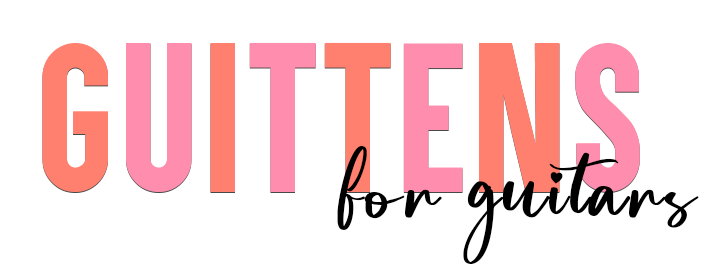The practice of music therapy has been shown to provide a wide range of benefits for individuals struggling with emotional, cognitive, and physical challenges. From improving communication skills to alleviating anxiety and depression, music therapy has proven to be a highly effective method of promoting healing and well-being.
Hula Hooping with Music Therapy
Another activity that has gained popularity in recent years for its therapeutic benefits is hula hooping. This simple activity involves moving the body in a rhythmic fashion, often to music, while twirling a hoop around one’s waist, arms, and legs. What many people may not realize is that combining hula hooping with music therapy can produce an even more powerful therapeutic effect.
Physical benefits
The rhythmic, repetitive motion of hula hooping can promote relaxation and stress relief, while the act of coordinating body movements with the hoop can help improve physical coordination. Moreover, incorporating music into this activity provides an extra layer of sensory stimulation, helping individuals to focus and engage more fully with the therapeutic process.
Mental Health Benefits
For individuals with conditions such as anxiety, depression, or even chronic pain, this combination of music therapy and hula hooping can provide a unique and effective way to promote healing and well-being. It is a testament to the power of combining multiple forms of therapy and harnessing the benefits of each to create a holistic approach to care.
Working Together Across Therapy
As the field of music therapy continues to evolve and expand, it is exciting to see how other forms of therapy can be combined to create new and innovative approaches to healing. The combination of music therapy and hula hooping is just one example of how different forms of therapy can work together to promote wellness and enrich people’s lives.
Holistic Wellness Programs
Hula hooping and music therapy can both be incorporated into a comprehensive wellness program.
Hula hooping is an excellent form of cardio exercise that improves coordination, balance, and core strength. It can be included in a fitness or movement-based component of the wellness program. Hula hooping can also be a fun activity that boosts mood and reduces stress.
Music therapy can be included in the mental health and emotional wellbeing component of the wellness program. Music therapy is a research-based practice that promotes emotional liberation, expression, and connection through musical experiences. It can be beneficial for managing anxiety, depression, addiction, and other mental health conditions.

Combining hula hooping and music therapy could create a holistic wellness program that addresses both physical and emotional health. Participants can engage in hula hooping while listening to music, which can boost their mood, energy, and motivation. Music therapists can also develop programs that incorporate hula hooping movements and rhythms into music therapy sessions. The combination of hula hooping and music can be an effective and enjoyable way to improve overall wellness.
Research
According to research, there is limited evidence to support the effectiveness of hula hooping and music therapy in improving overall wellness. More needs to be researched and documented about the combination of music therapy and hula hooping.
Hula Hoop Studies
However, there are several studies have been conducted on the benefits of hula hooping for physical fitness and wellness. Here are some examples:
1. A study published in the Journal of Strength and Conditioning Research in 2011 found that hula hooping can be an effective cardiovascular workout, improving heart rate and oxygen consumption.
2. Another study published in the Journal of Physical Activity and Health in 2015 found that regular hula hooping can improve core strength, flexibility, and balance.
3. A study published in PLOS One in 2016 found that hula hooping can be beneficial for reducing waist circumference and improving overall body composition.
4. A study published in the Journal of Sport Science and Medicine in 2018 found that hula hooping can be a fun and effective way to improve aerobic fitness and muscular endurance.
5. A study published in the Journal of Exercise Science and Fitness in 2019 found that hula hooping can also improve hand-eye coordination, reaction time, and cognitive function.
Studies in Music Therapy & Physical Goals
1. Pain Management: A meta-analysis of 4 studies published in Pain Management Nursing showed that music therapy significantly reduced pain levels in adult patients.
2. Cardiovascular Health: A study published in the Journal of Cardiovascular Nursing found that music therapy reduced heart rate, blood pressure, and anxiety in patients with heart disease.
3. Movement Disorders: A study published in the Journal of Music Therapy found that rhythmic auditory stimulation (RAS), a type of music therapy, improved walking speed and balance in patients with Parkinson’s disease.
4. Surgery Recovery: A meta-analysis of 7 studies published in the Cochrane Database of Systematic Reviews showed that music therapy significantly reduced postoperative pain, anxiety, and use of pain medication in adult patients.
5. Breathing Disorders: A study published in the Journal of Music Therapy found that music therapy improved respiratory function and reduced anxiety in patients with chronic obstructive pulmonary disease (COPD).
Overall, these studies suggest that hula hooping can offer a range of physical and cognitive benefits for individuals looking to improve their fitness and wellness. And the research in music therapy on a variety of physical and physiological goals is amazing! With all of that, it appears that incorporating hula hooping with music therapy is an exciting area of work, and can really help with individuals’ needs in the areas of physical wellness and mental health.


References
This blog post was partly written with the assistance of AI.

